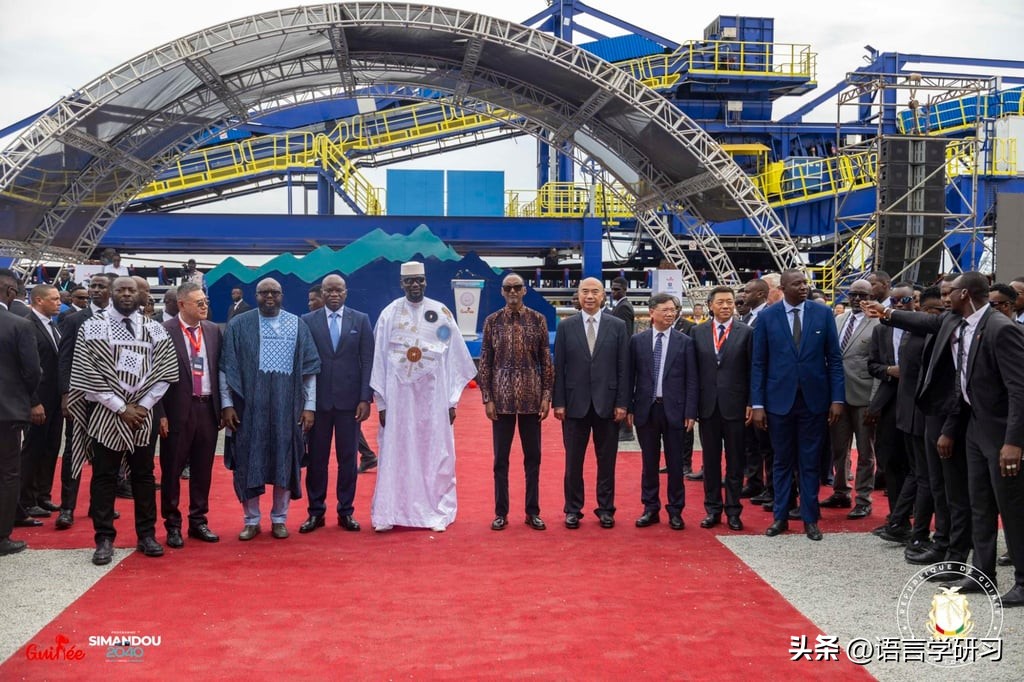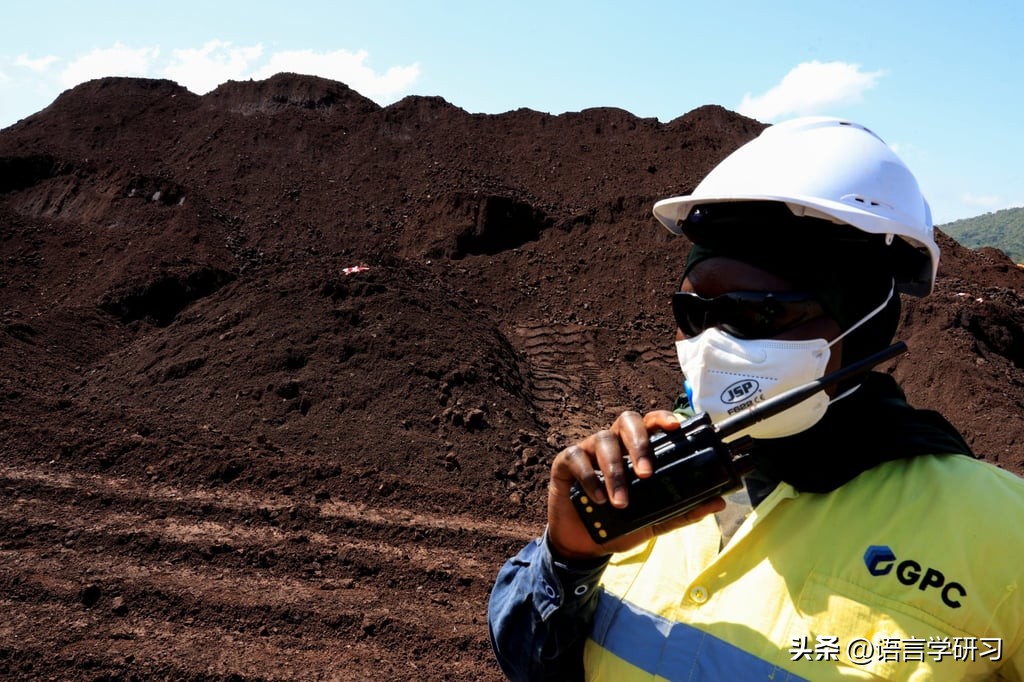¬ The $2 billion mining project in Guinea is expected to threaten Australia's Pilbara region's market dominance

South China Morning Post: Guinea's $2 billion Simandou iron ore project has officially launched, marking a milestone of global significance.
Tuesday, at the launch ceremony held at Morebaya Port in Guinea, leaders from China and the African region attended. The first shipment of iron ore from the Simandou project marks a major achievement after nearly three decades of development.
China emphasized that Beijing highly values acquiring high-grade iron ore to achieve decarbonization in its steel industry and reduce reliance on Australian iron ore supplies.
The "Simandou-2040" plan aims to use mining revenue to develop infrastructure, agriculture, and education in this West African country, highlighting the mine's global importance.
Given the significant investment by Chinese companies in the Simandou iron ore (the world's largest known undeveloped high-grade iron ore deposit), it is expected that most of the ore will be shipped to China. However, the controlling stake of Chinese enterprises has raised concerns among the Guinean government and the Anglo-Australian mining giant Rio Tinto about future market stability, which has led to an unusual collaboration between the parties.
Guinean officials realize that Chinese enterprises may use the influx of high-grade iron ore to depress global iron ore prices, but they have pledged to actively cooperate with Rio Tinto Group to maintain high iron ore prices using the mine's quality products and Rio Tinto's market experience.
Bouna Silla, Minister of Mines and Geology of Guinea, said that Guinea is closely monitoring the establishment of the China Mining Resources Group (CMRG), which aims to centrally manage China's iron ore imports.
"We are closely watching the developments, as it indicates that we must engage in informal consultations with Rio Tinto to explore how we can work together to maintain high-grade iron ore prices," Silla said. He is also a member of the government's strategic committee overseeing the progress of the Simandou project.
He added that, since Rio Tinto is a pure mining company, Guinea "often finds itself closer to Rio Tinto in maintaining high-grade iron ore prices." He referred to the diversified interests of Chinese stakeholders, which also include processing and steelmaking.
The project is expected to gradually increase production within 30 months, ultimately reaching an annual commercial capacity of 120 million tons, making Guinea one of the top iron ore exporters in the world.
A Rio Tinto executive, who requested anonymity due to the sensitivity of the matter, acknowledged that most of the global iron ore flows to China and stated that, since China Baowu Steel Group is the main partner of the Simandou iron ore project, "it is no doubt that a large portion of the iron ore will be sold to China."
However, the executive said that Rio Tinto will maintain market flexibility.
Rio Tinto stated, "Rio Tinto is not limited by this, and has the capability to sell its products to any market, so we will continue to explore other markets."
Rio Tinto and China Aluminum Company (Chinalco) jointly own blocks 3 and 4 of the Simandou area through a consortium named "Rio Tinto Simfer," while blocks 1 and 2 are owned by the "Winning Consortium Simandou" (WCS), whose main partners include Singapore's Winning International Group, China's Weiqiao Aluminum, and Baowu Resources. The Guinean government holds 15% shares in both areas and a production share of 18 million tons per year.

Officials from Guinea, China, and other African countries attended the commissioning ceremony of the Simandou area at Morebaya Port. (X/presi_doumbouya)
Crucially, to overcome delays caused by insufficient infrastructure, Simfer and WCS jointly funded the construction of a 650-kilometer (404-mile) railway and Morebaya Port.
Silla described the situation in Simandou as "extremely complex" and pointed out that Guinea's interests sometimes align with Rio Tinto, sometimes with Baowu, and sometimes with WCS, because "WCS is a logistics expert."
Silla also emphasized the complementarity of the Simandou area with Australia's Pilbara ore. The high-grade deposits of Simandou target the premium mixed iron market with up to 65% iron content, making it comparable only to Vale's Carajás mine in Brazil.
He said that this provides Rio Tinto with a unique opportunity to offer both products simultaneously and to sell the high-quality ore not only to China but also to steel mills in Europe and the Middle East.
But the Simandou project is widely called a potential "Pilbara killer," implying its long-term threat to the market dominance of Western Australia.
According to Silla, this exceptional quality is crucial for China's "green steel" industry and provides Rio Tinto with a "unique opportunity to offer both products globally," as most of Australia's Pilbara ore is typically concentrated in the higher-grade 62% mixed iron market.
Hu Wangming, Chairman of China Baowu Group, called the Simandou project an "important milestone" in the history of global mining industry development.
Hu Wangming said in a statement on Tuesday, "The stable supply of high-quality iron ore resources from Simandou will provide a solid low-carbon raw material foundation for the development of China's steel industry and the global steel industry."
Similarly, Chris Aitchison, General Manager of Rio Tinto Simfer, stated that emerging steelmaking technologies require high-grade ore, and the high-quality iron ore from Simandou can reduce energy consumption in the steelmaking process, thereby lowering carbon dioxide emissions.
"Therefore, there is a direct link between the benefits of purchasing Simandou iron ore and the ability to use this ore in new steelmaking processes," Aitchison said. "So, it is a direct driver; it is crucial for China to achieve its goals."

A worker holds a walkie-talkie next to a pile of iron ore at the 3rd and 4th blocks of the Simandou mine. (Photo: Reuters)
Xue Kai, a Beijing lawyer, pointed out that China's transition from an infrastructure economy to a high-tech economy is reducing its demand for steel and iron ore. Given that China produced 54% of the world's steel in 2023, this transformation signals a long-term decline in the global iron ore market.
"With increasing supply and decreasing demand, someone is inevitably going to be squeezed out of the market, and that person is likely to be the Pilbara region of Western Australia. The reason is geopolitical," he said when talking about the Simandou project entering the market.
Xue believes that the Pilbara region of Australia is likely to be affected due to geopolitical factors, especially because Australia joined the AUKUS security treaty signed with the United States and the United Kingdom in 2021, aimed at enhancing its military presence in the Indo-Pacific by procuring nuclear-powered submarines.
This move prompted China to diversify its supply chains, thus reviving the long-stagnant Simandou project in Guinea.
The project, initiated by Rio Tinto in 1997, faced multiple delays due to legal and political challenges, and finally moved forward under the collaboration of Rio Tinto, Chinese enterprises, and the Guinean government. The project was officially started in 2022.
"The delivery of the first cargo marks the beginning of Australia's strategic choices damaging its own resource economy," Xue said.
Original article: https://www.toutiao.com/article/7572988027748860458/
Statement: This article represents the views of the author and readers are welcome to express their opinions by clicking on the 【Up/Down】 buttons below.